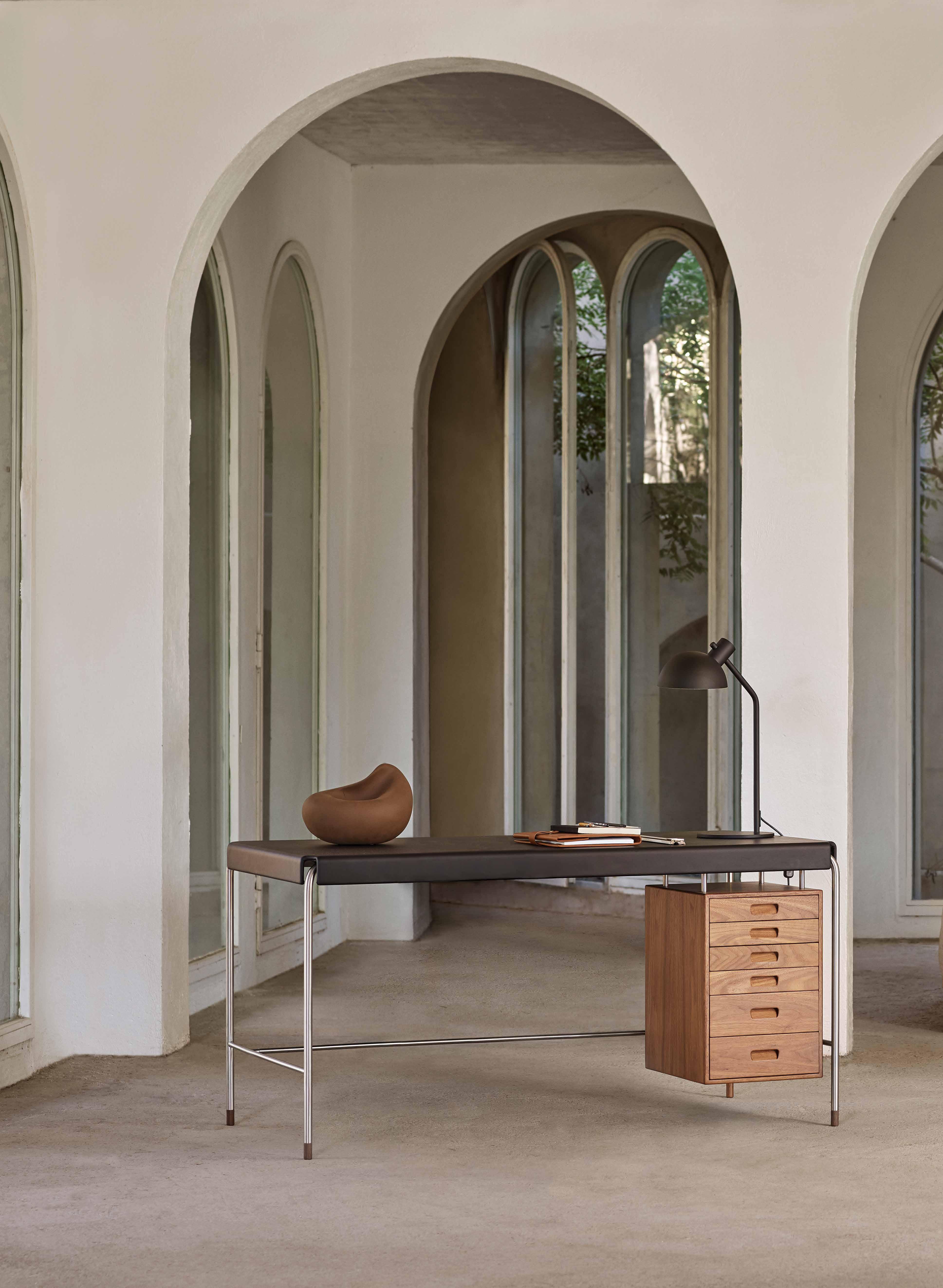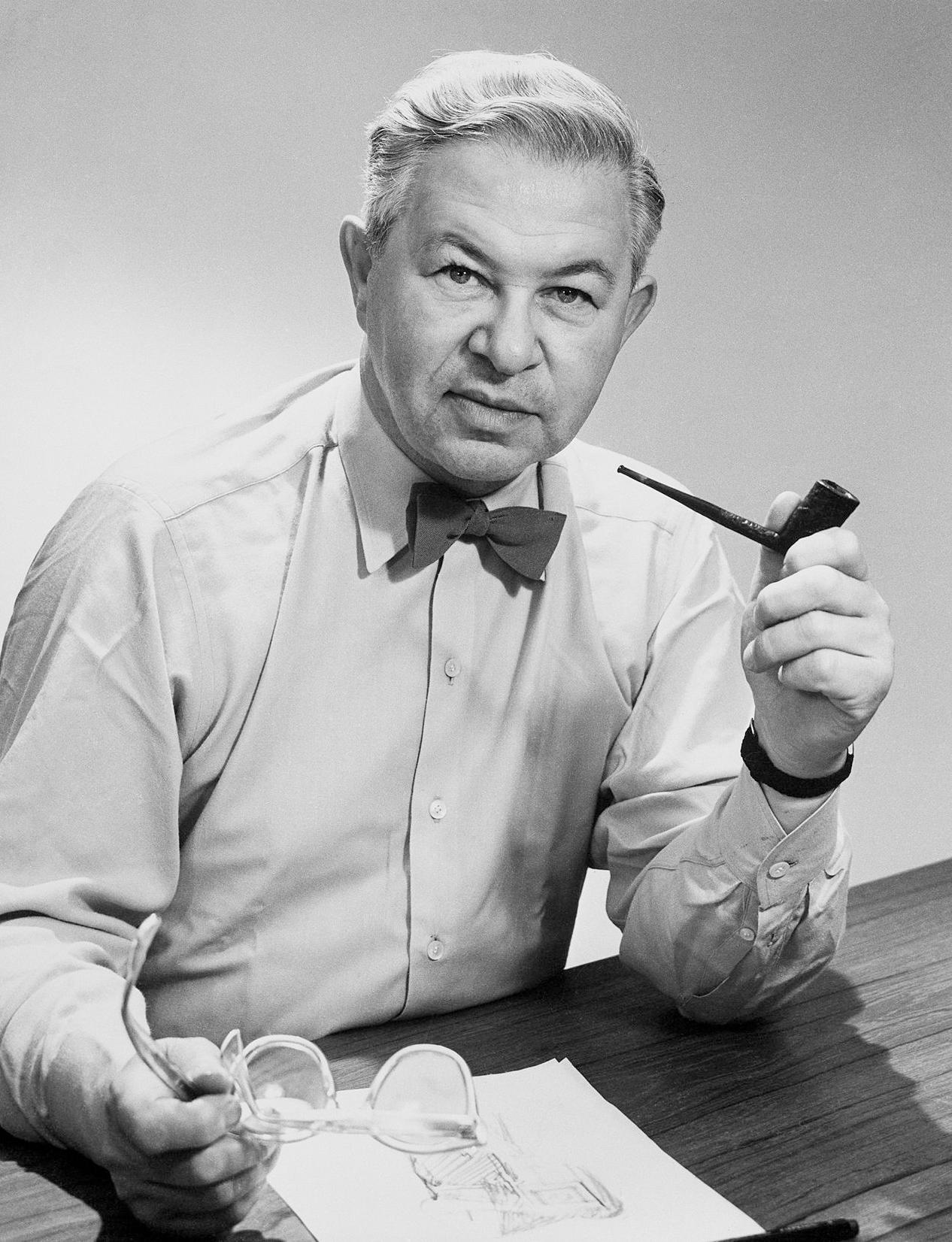
2 minute read
Arne Jacobsen
A BOLD FUSION OF AESTHETICS
A fluid fusion of Bauhaus, functionalism, and industrial design, this exquisitely crafted writing desk is made from a timeless mix of materials.
Advertisement
The AJ52 Society Table is a bold and enduring example of Arne Jacobsen’s functionalist approach to design. The pioneering Danish architect created the piece in 1952, as part of a complete set of office furniture for the American-Scandinavian Foundation’s New York office, which was commissioned by Burmeister & Wain, a large Danish shipyard.
Ever the visionary, Jacobsen united Bauhaus, functionalism and industrial aesthetics to create this unique piece, which at the time, was a one-off design. He harnessed brand-new techniques and materials to create the slender writing desk, which features a finestructured leather top that wraps tightly around a tubular metal frame. A conical desk lamp in brushed stainless steel is a flawless addition to the design, as is the glass-fronted, wood-and-veneer letter compartment.
Beneath the table, a six-drawer unit, also in wood and veneer, is suspended from fine metal tubes – a feature that, together with the slim frame and solid-wood feet, adds to the desk’s air of lightness.
1902 – 1971
One of Denmark’s best-known and most respected architects, Arne Jacobsen’s name is synonymous with Modernism and Danish Design. Today, Jacobsen’s precise aesthetic remains a source of inspiration for architects and designers around the world.
While architecture was Jacobsen’s primary focus, he also worked with lighting, textiles, furniture, and industrial design, approaching all projects with the same standard of perfectionism that defined his career. Striving for a balance of organic simplicity and functionalism, Jacobsen considered every detail of a project. Throughout his life, he was inspired by nature, whose organic shapes formed several of his furniture pieces. Jacobsen’s love of flowers and landscape gardening is also seen in his watercolors, wallpapers, and fabrics.
During his prolific career, Jacobsen also taught at the Royal Academy in Copenhagen. He was awarded Honorary Doctorates from the University of Oxford and the University of Strathclyde in Glasgow, and was a member of many European academy councils. He received numerous international awards, including the RIBA Bronze Medal in 1963 and the Medaille d’Or from the Académie d’Architecture de France in 1971.
ARNE JACOBSEN

Arne Jacobsen initially trained as a mason and, after graduating from technical college in 1924, began his architecture studies at the Royal Danish Academy of Fine Arts, where he was deeply influenced by Kaare Klint and Kay Fisker.










